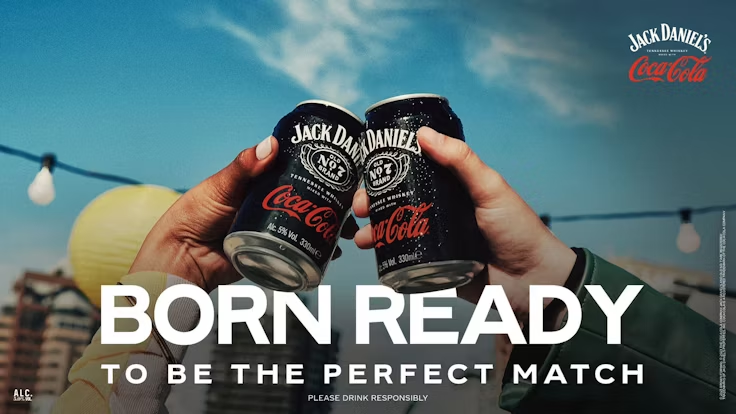Ambitious brands can look to fulfil Category Entry Points (CEPs) as a means to fuel growth. Any product will have multiple CEPs, and combining mental availability (coming to mind in the right moment) and physical availability (being there in the right moment) to meet these is the surest recipe any brand has for growth.
Brands may identify powerful CEPs in their category or outside of it that they are unable to meet with their existing SKUs. The only way to unlock these potential avenues for growth is through innovation.
Innovation can be motivated by a desire to meet trends, improve existing products or even drive “new news”. However, creating new products to meet specific CEPs gives brands an advantage from the start. Category Entry Points are concerned with consumer habits and motivations, meaning that a brand attuning itself to these is orientating itself to its prospective customer from the get-go.
Many new product launches clearly aim to expand the CEPs a brand is relevant to. This can be achieved in various ways, but each is designed to give the brand the capacity to be relevant to a wider range of occasions.
Added benefits
A common entry point into categories can be the benefits a product can bring. For example, consumers may look for something that provides them with energy or contributes to their immune system function.
Whether it’s skincare or supplements, consumers are increasingly attuned to the ingredients or nutrients they want and need. With a huge audience actively seeking out products with specific benefits, it’s no longer just typical “wellness” brands playing in these spaces.
Special K Protein Cereal
Cereal no longer holds the dominance of breakfast time it once enjoyed. Consumers have a wider variety of options available to them, and with many more health-conscious than ever, cereal, which is often seen as being full of sugar, has fallen out of favour with some.
With cereal no longer being seen as the default option for breakfast, Special K has sought to become relevant to consumers seeking specific health benefits from their breakfasts. It has introduced Protein and Immune Support cereal, which caters to specific functional benefits that consumers might be looking for.
It’s not just bodybuilders who are actively seeking out protein; it’s become more popular across demographics. For example, online grocer Ocado recently reported searches for “protein” on its site have doubled since 2023.

Coco & Eve Anti-Ageing Tanning Serum
Self-tanning products are something many might buy in time for a special event or the summer, but introducing skincare credentials to more daily-use products gives consumers a reason to buy the products beyond just achieving a glow.
The anti-ageing category is huge, and Coco & Eve’s introduction of anti-ageing ingredients into a tanning product gives consumers two reasons to buy into the brand.

Adapting to changing habits
As strong brands know, Category Entry Points exist irrespective of what they do. These CEPs are consumer-oriented and will be filled regardless of whether or not your brand is there.
By the same token, brands can’t expect the same Category Entry Points to persist for decades. Consumers’ habits and attitudes change, and so must brands’ attitudes to CEPs. This doesn’t mean abandoning existing CEPs, but rather innovating to meet new ones and thus ensuring your brand comes to mind in the future as well as the present.
Warburtons Naan Bread
Warburtons is the leading UK packaged bread brand, but with changing eating habits, traditional sliced bread is no longer as dominant as it once was. In particular, working from home means consumers may have moved away from the default of a packed sandwich at lunchtime.
With its market-leading status in traditional sliced bread, Warburtons is innovating to become relevant to Category Entry Points outside of the packed lunch or morning toast occasions. The brand has launched a Toaster Naan bread, with the goal of building relevance to the Indian meal Category Entry Point.

Ben’s Original Lunch Bowl
The aftermath of the pandemic has led to the emergence of new consumer habits, particularly in terms of working patterns. With at-home workers now having more ability (although not necessarily more time) to make lunches in their own kitchen, rice brand Ben’s Original innovated to create a product specifically tailored to this category entry point.
Its lunch bowl is designed as a meal for one, ready in 90 seconds at home, making it ideal for the working-from-home lunch entry point.

Nike Training Club
This was another innovation sparked by the pandemic, with sportswear brand Nike tapping into the trend for at-home workouts that boomed from necessity during the lockdown months. The app introduced by Nike provides workout routines, training plans and fitness guides for users. While Nike has long been a companion for athletes through its apparel, the app gives the brand a larger role in various types of workouts.
How it’s packaged up
Innovation to cater to new Category Entry Points doesn’t have to be about creating an entirely new product; sometimes, a new format can suddenly make your brand relevant to a whole new set of occasions.
Moju Dosing Bottle
Juice shot brand Moju had positioned itself as an alternative to caffeinated beverages like energy drinks or coffee, with its one-shot bottles available in convenience channels for consumers needing a quick pick-me-up.
In 2023, the brand introduced its “dosing” bottles in larger formats, which not only provide an appealing value proposition for consumers but also lend themselves to different moments. For example, someone working at an office might keep it on their desk, or a family might stash it at home. The innovation has helped Moju become more than just an on-the-go brand.

La Vieille Ferme canned wine
“The Chicken Wine”, as it is affectionately known by devotees, La Vieille Ferme has become a popular rosé and white wine choice, particularly among younger adults.
But for even the biggest fan of the avian tipple, drinking out of the bottle can attract funny looks in public. Wine has not typically been an on-the-go drink, with cans of beer or cider being a much more popular choice for park days out or a tin on the train. Nor has wine lent itself to just one serving. Opening a bottle of wine effectively means committing to drinking the whole thing within a couple of days, hardly ideal if you fancy just one.
Canning wine provides something of a solution to these problems. For La Vieille Ferme, with its younger-skewing consumer, this is particularly impactful, as its consumer is perhaps more likely to want to grab a can on the way to a party or to hang out with friends at a picnic.

Robinsons Mini
For many generations of us, squash is best associated with a massive bottle, doled out to the masses at kids’ parties or by your mum on a hot summer’s day. But around a decade ago, Robinsons launched an innovation to make its famous concentrate juice pocket-sized.
For kids and big kids alike, the Minis innovation means that the squash can be added to water on the go, taking Robinsons beyond being simply an at-home brand.

Making the brand relevant more often
The mission of making a brand relevant more often is central to Category Entry Points. Some brands do an excellent job of associating themselves with specific CEPs, but become pigeonholed towards a narrower set of CEPs, which limits growth. Innovation can often be the key to making a brand relevant to more occasions.
Terry’s Chocolate Easter Eggs
A Terry’s Chocolate Orange is probably best associated with the Christmas season, with the treat being a classic stocking filler. The brand is currently on a mission to drive its sales up throughout the year.
Terry’s has clearly decided that associating itself with another seasonal occasion entry point could be a smart way to do this, launching a range of Easter eggs in the hope of becoming a staple of the spring as well as the winter.

Deliveroo partnering with non-food retailers
Deliveroo was first known for its fast-food delivery before expanding into rapid grocery delivery, allowing consumers to quickly grab a forgotten ingredient or top up their shop without even leaving the house. It’s now possible for Deliveroo users to have pet supplies, gifts or even paint delivered by one of the brand’s riders as it partners with non-food retailers.
This opens the brand up to lots of other convenience occasions beyond its fast food and grocery routes. Deliveroo could become the go-to for forgotten gifts, emergency DIY equipment, or even to replace a lost earpod.

Jack Daniel’s and Coke
Jack and Coke is perhaps one of the most popular mixed drink orders in the world, so it made perfect sense for the whiskey brand and Coca-Cola to come together in one ready-to-drink product.
The Jack and Coke can bring the two brands together for on-the-go drinking occasions. Previously, a consumer wanting the combination outside of the bar setting would have had to invest in both a bottle of Jack Daniel’s and Coke, something that is relatively high commitment. The RTD can provides a potential recruitment opportunity for the brands, by putting it into consumers’ hands at a relatively low cost.
With RTD cocktails still being relatively new to consumers, the familiar bar order entry point also provides an element of familiarity in the novel.

Corona Cero
Beer has increasingly got in on booze-free occasions in a big way. The launch of non-alcoholic versions of big beers may seem old hat at this point, but it’s opening up these powerhouse brands to a whole range of Category Entry Points that were previously off-limits to them.
For example, the lunchtime occasion, with some grocers now offering non-alcoholic beers as a drink option in their meal deal promotions. Sainsbury’s, the U.K. retailer, is offering dedicated non-alcoholic brand Lucky Saint, and AB InBev’s Corona Cero as part of its meal deal. This gives Corona access to potentially millions of lunchtimes that previously it would have been discounted from.
Doing more of what you’re best at
Few of the innovations listed above seem massively radical, yet they act to make these brands relevant to a whole new set of category occasions.
Some great innovations are shocking and surprising, breaking norms and driving new habits. But, for a lot of new launches, the reaction will be, “That makes sense” or even, “Didn’t they already make that?” That’s for two reasons. The first is that there are very few brands that could make vodka and cat food and still have a cohesive and salient identity. Permission to play is a key phrase in innovation. Consumers will take you much more seriously if they already know you for a product in the same category. Good innovation will simply motivate them to buy into that category, giving them a reason to purchase by speaking to their specific needs.
The second is that if you’re orientating yourself to Category Entry Points, then the innovation should make sense. The product should address a specific need or occasion that many consumers have. If you find consumers reacting by saying, “When would I ever buy that?” then your innovation is unlikely to take off.
In the end, innovation doesn’t always need to be groundbreaking; it simply needs to meet real consumer needs




